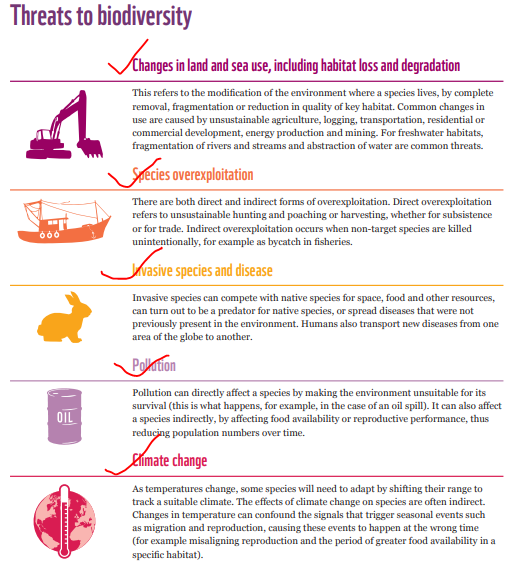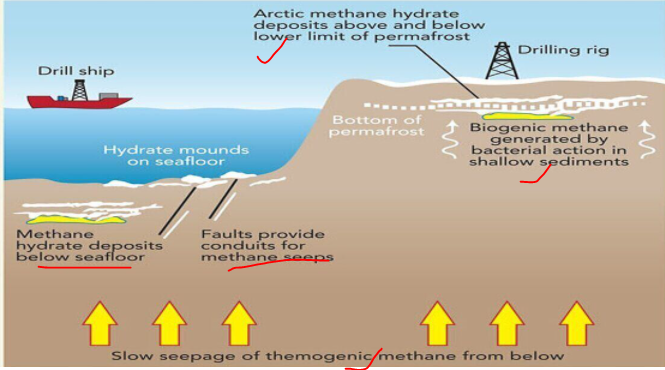Goaltide Daily Current Affairs 2020
Current Affair 1:
The Living Planet Report 2020
Report is too big, but we will try to cover this report through few images and basics. More is not required.
The Living Planet Report, WWF’s flagship publication released every two years, is a comprehensive study of trends in global biodiversity and the health of the planet.
The Living Planet Report 2020 is the 13th edition of the report and provides the scientific evidence to back what nature has been demonstrating repeatedly: unsustainable human activity is pushing the planet’s natural systems that support life on Earth to the edge.


Living Planet Index is important:
It is a measure of the state of the world’s biological diversity based on population trends of vertebrate species in terrestrial, freshwater and marine habitats.
- In 2020, the LPI shows an average rate of decline in population size of 68% between 1970 and 2016.
- The LPI now tracks the abundance of almost 21,000 populations of mammals, birds, fish, reptiles and amphibians around the world.


Use this Coral waala map given below whenever asked about corals in Mains, it will fetch you extra marks:

Just remember few findings to mention in any answer writing.
- The 2020 global Living Planet Index shows an average 68% fall in monitored populations of mammals, birds, amphibians, reptiles and fish between 1970 and 2016.
- The average abundance of 3,741 freshwater populations, representing 944 species monitored across the globe, declined by 84% on average.

- 75 per cent of earth’s ice-free land has been significantly altered, most of the oceans polluted and over 85 per cent area of wetlands lost ~ all due to human activity.
- One in five plants is threatened with extinction.
- Pollinators such as bees, butterflies on declining trend.


India’s scenario:
- India has 2.4 per cent global land share, about eight per cent global biodiversity and around 16 per cent global population
- However, it has lost 12 per cent of its wild mammals, 19 per cent amphibians and 3 per cent birds over last five decades.
- India’s ecological footprint per person is less than 1.6 global hectares (gha) / person (smaller than that of many large countries). But its high population size has made the gross footprint significantly high.
Current Affair 2:
KG Basin an excellent source of methane fuel
First of all, you know about Krishna Godavari Basin.
Extensive deltaic plain formed by two large east coast rivers, Krishna and Godavari in the state of Andhra Pradesh and the 16 adjoining areas of Bay of Bengal in which these rivers discharge their water is known as Krishna Godavari Basin.

The Krishna-Godavari (KG) Basin holds a massive reserve of methane hydrate, a rich source of clean fuel, according to a recent study conducted at the Agharkar Research Institute, which works under the government’s Department of Science and Technology. This study using molecular and culturing techniques revealed maximum methanogenic diversity in the KG basin, which is one of the prominent reasons to confirm it to be the extreme source of biogenic methane in comparison to the Andaman and Mahanadi basins.
Two small definition: Just to simplify
- Methanogenesis is the process of generation of methane by methanogens, which are strictly anaerobic microorganisms.
- A biogenic substance is a product made by or of life forms.

The study was conducted as a part of the DST-SERB (Science and Engineering Research Board) young scientist project titled 'Elucidating the community structure of methanogenic archaea in methane hydrate'.
Now see what scientists have to say:

Methane hydrate is formed when hydrogen-bonded water and methane gas come into contact at high pressures and low temperatures in oceans.
Learn Serb also:
What is SERB?
The Science and Engineering Research Board (SERB) is a statutory body established through an Act of Parliament. Supporting basic research in emerging areas of Science & Engineering are the primary and distinctive mandate of the Board. The Board structure, with both financial and administrative powers vested in the Board, would enable quicker decisions on research issues, greatly improving thereby our responsiveness to the genuine needs of the research scientists and the S&T system.

Current Affair 3:
Great Indian Bustards close to be extinct in Peninsular India
India has the only population of the Great Indian Bustard in the world. There are two breeding grounds in the country, one in Rajasthan and the second in the Ballari district of Karnataka. However, there have been no recent sightings of the eight GIBs found in Ballari.
What are the reasons they are disappearing in Peninsular India?

Learn more about Great Indian Bustard:
The great Indian bustard inhabits dry grasslands and scrublands on the Indian subcontinent; its largest populations are found in the Indian state of Rajasthan.

It is listed in Schedule I of the Indian Wildlife (Protection)Act, 1972 and in the Convention on Migratory Species (CMS) Convention and in Appendix I of CITES.
Current Affair 4:
Community Conserved Areas in Arunachal Pradesh
Please students. Such topics will hardly be covered by institutions. These topics are very important for UPSC Prelims Exam.
WWF-India had introduced the concept of community conserved area (CCA) in 2004 since most of the forest land is owned by local communities in this landscape with the focus on strengthening community-based conservation initiatives.


Community Conserved Area (CCA) model followed in Western Arunachal Pradesh has helped in involving the villagers in conservation initiatives in forests that lie outside protected areas by ensuring security to their traditional custodianship and user rights over the natural resources.
Communities in Arunachal Pradesh have voluntarily declared nine community conserved areas over 15 years which cover roughly 1500 sq km of forests. These cover significant habitat of forests which are home to the red panda, Himalayan goral, serow, takin, small cats and contains high altitude lakes.
What CCA comprises of: in context of Arunachal Pradesh
The community conserved area comprises panchayat members, village elders and youth who work for the conservation and management of their forests, to secure the habitats of red pandas, musk deer, serow, goral, Himalayan black bear, Siberian weasel, leopard and wild dogs.
The model is being implemented in Western Arunachal Landscape (WAL) which is predominantly occupied by the Monpa tribe, who are highly dependent on forest and natural resources for their livelihood needs. The communities share strong religious ties and cultural values with their natural surroundings. They exercise their traditional rights of collection of fuelwoods, pole (timber), non-timber forest products (NTFPs) and medicinal plants in these forests.
What spaces are available for CCAs in Indian law?
There is no national-level policy to recognize conservation efforts by communities, though there are references to such a need in documents such as the National Wildlife Action Plan, the draft National Biodiversity Strategy and Action Plan and some other. Neither is there a law specifically focused on providing support to CCAs. However, there are limited spaces available in some laws—limited because they do not take into account the ground reality of CCAs, their local contexts and local institutions. As far as we know, very few CCAs have yet taken support from any of the laws and policies mentioned below (except in the case of Nagaland, where the state-specific law on village councils has been used).
What is the difference between CCA and Conservation and Community Reserves?
Conservation Reserves:
Conservation reserves and community reserves in India are terms denoting protected areas of India which typically act as buffer zones to or connectors and migration corridors between established national parks, wildlife sanctuaries and reserved and protected forests of India.
Such areas are designated as conservation areas if they are uninhabited and completely owned by the Government of India but used for subsistence by communities and community areas if part of the lands is privately owned.
These protected area categories were first introduced in the Wildlife (Protection) Amendment Act of 2002 − the amendment to the Wildlife Protection Act of 1972. These categories were added because of reduced protection in and around existing or proposed protected areas due to private ownership of land, and land use.
Comparison with CCA:
This category does open up some space in the law for people’s participation in wildlife conservation. Consultations with local people before declaring an area a conservation reserve is mandatory, as opposed to the situation in other protected areas such as national parks and sanctuaries. BUT CCAs are on government lands but they have their own well worked-out management and regulation institutions, and a high degree of de facto control. It is unlikely that these well-established institutions would agree to become part of a conservation reserve where their only role in decision-making would be to advise the chief wildlife warden (CWW) of the state, who may or may not agree to the suggestions.
Similar with Community Reserve:
These protected area categories were first introduced in the Wildlife (Protection) Amendment Act of 2002 − the amendment to the Wildlife Protection Act of 1972. These can only be declared by the government on private or community lands by the government, which is against the basic principle of CCA where community hold the de facto control. Finally, there are no guidelines on how these areas are to be declared. For all these reasons, community reserves is an inappropriate category for most CCAs.
Current Affair 5:
In Venus’ clouds, scientists find gas that suggests life

The researchers behind the finding, from US, UK and Japan, claim to have detected the gas phosphine in Venus atmosphere. The study has been published in Nature Astronomy.
Phosphine is synthesized on Earth by anaerobic lifeforms (those that exist without oxygen) and decaying organic matter. It can also be produced in the laboratory and is highly flammable. The detection was made using the Atacama (ALMA) array in Chile and the James Clerk Maxwell telescope in Hawaii.
What scientists have to say:

Findings and implications
- Scientists have studied planetary atmospheres for decades, including those of exoplanets. Studying rocky planets’ atmospheres provides valuable insights into how the gases react with surfaces and sub-surfaces. Emissions, for example, could indicate life or water vapour, which is why scientists keep an avid watch on methane spikes in the Martian atmosphere.
- Just like methane, the presence of phosphine can be interpreted as a biosignature, or an indicator of past/present life.
- Phosphine is produced on Earth by human activity or by microbes, both of which are capable of maintaining a certain concentration of the gas in the oxygen-filled atmosphere.
- But such gases can also be produced by other mechanisms.
- It is found in the atmospheres of giant gaseous planets like Jupiter and Saturn because these environments lack oxygen and are at high temperatures and pressures, causing the same chemical reactions as in labs. But rocky planets do not have environments conducive to the natural production of phosphine, making it a potentially good indicator for life.
About Venus and some missions related to it:
Venus is the hottest planet in the solar system — even though Mercury is closer to the Sun with an average surface temperature of 450°C. This is because of its dense atmosphere the thickest of the four rocky planets is 96 per cent carbon dioxide.
Currently, only Japan’s Akatsuki probe is in orbit around Venus, although more missions are planned. Both Russia and India are planning to send missions to the planet to study the atmosphere. Neither mission is approved yet.
India’s proposed project, Shukrayaan-1, is said to be slated for 2023. The orbiter will carry a balloon probe that, according to plans, will settle at a height of 55 km above the Venusian surface, around where phosphine has been detected.
<< Previous Next >>


